Queer Wiki Page
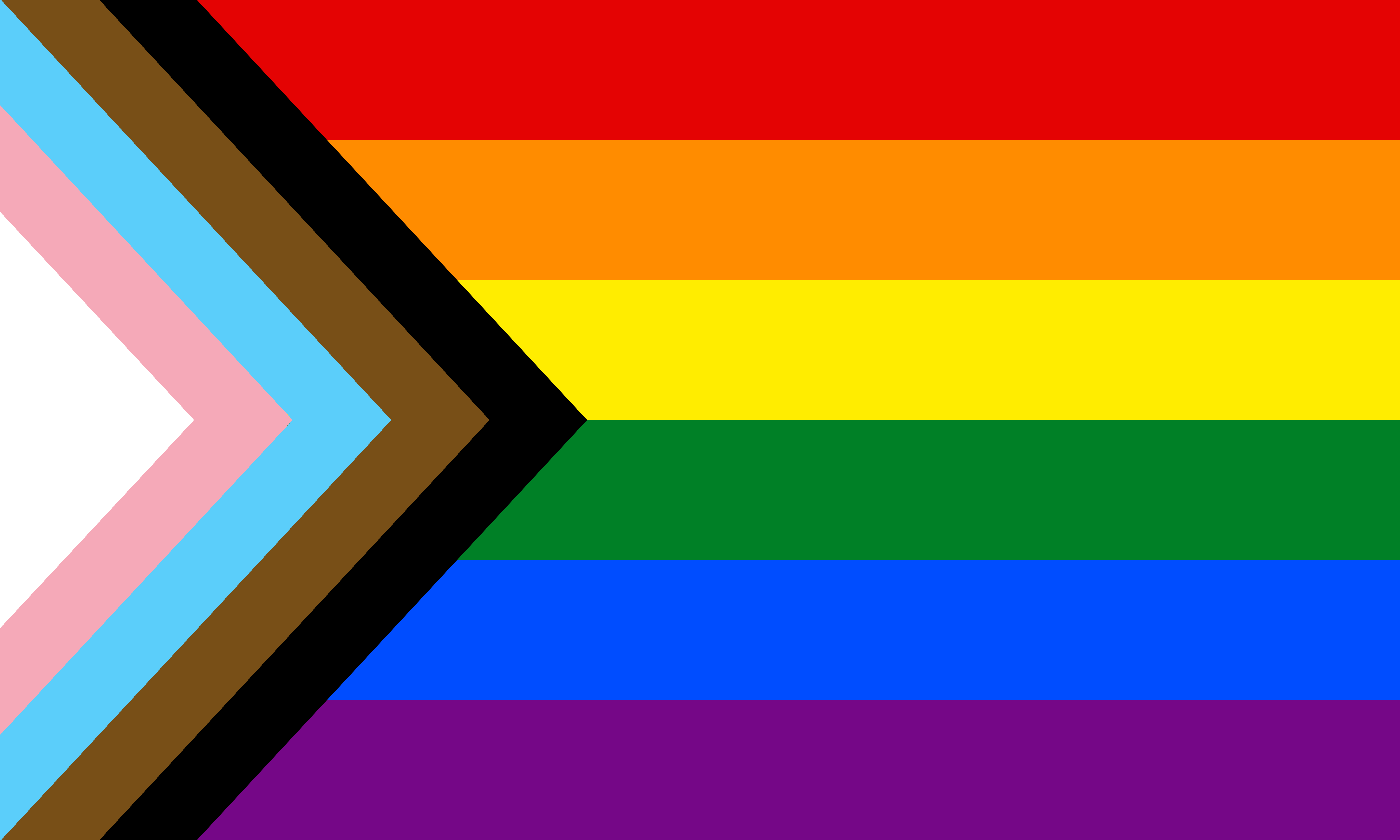 Queer Flag
Queer Flag
Queer. The word has multiple meanings. But in the context of the LGBTQIA+ community, it is an umbrella term for anyone who has a self-reference identity that is outside of the hetero-cisgender community. It is therefore a word that refers to the entire LGBTQIA+ community with its host of identities.
It also acknowledges that sexuality and gender are complex things, change over time, and may not fit into either/or identities like male/female or gay/straight. Some people choose to identify as queer as an intentional way of not identifying with any other specific words or phrases from the LGBTQIA+ spectrum.
So let’s have a look at this host of identities.
Table of Content
Terminology
The word queer did not always refer to non-hetero and non-cis people. But that is a bit of history which will come later. Suffice it to say that is has been co-opted from other meanings and is now recognized around the world as a term for the entire LGBTQIA+ community.
Let’s dig a bit deeper into specific terms that fall under this umbrella.
Queer
As stated, the term queer is an umbrella word used by many to describe a wide spectrum of sexual orientations, and gender identities – lesbian, gay, bisexual, queer as well as those who are trans, nonbinary, genderqueer people, and more. Although the word queer had been used as a slur at one point in history, many activists and movements have made the decision to reclaim queer. Here are all of the sub-terms associated with “queer.”
- Queer People: This is a word/phrase used to describe a wide range of people in the LGBTQIA+ community.
- Queer Nation: Queer Nation is an organization comprised of LGBTQIA+ activists. These activists founded Queer Nation back in 1990 in response to an increase in anti-gay physical violence and hate crimes. The purpose of this foundation is to eliminate homophobia and increase the visibility of the LGBT community.
The group distributed the Queer Manifesto in the NYC Pride Parade of 1990. This was an extraordinarily important document that served as a call out and a call to action that reclaimed the word queer for the community. - Queer Theory: Queer theory is defined as the study of gender identity and sexual practices outside of cisgender and heterosexual. These studies follow social movements, constructs, and social and cultural phenomena. Many queer theorists study and challenge the notion that heterosexuality is the norm.
Gay
A term used to describe sexual orientation in which a person is sexually attracted to people of the same sex or gender identity. Queer, homosexual, gay, or lesbian are all phrases that are often used to describe people who are gay.
Sometimes the word is used by homophobes as derogatory. “That is so gay” is a phrase used by some people to describe something stupid.
Lesbian
Lesbian is a term used that describes women who are sexually and/or romantically attracted to other women.
LGBTQIA
An acronym that stands for Lesbian Gay Bisexual Transgender Queer Intersex and Asexual. Sometimes you can see a misconception that A stands for ally. While allies do have a welcome and very important place alongside the community, they are not part of the community.
Transgender
A type of queer identity in which a person does not identify as the gender they were assigned at birth. Some trans folks will use the term queer as a way to identify themselves, especially those who choose to identify outside of the binary.
The opposite of transgender is cisgender, people who do identify with the gender they were assigned at birth.
Bisexual
A sexual orientation in which a person is romantically and sexually attracted to more than one gender identity.
Pansexual
A sexual orientation in which a person is romantically and sexually attracted to people regardless of gender identity.
Homophobia/Queerphobia
An unreasonable fear or hatred towards those who identify as having a queer identity. This hatred is often fueled by religious and political opinions. They see those who are queer and believe that they are committing acts of sexual deviance for not going with the status quo. There are many cases of child and adolescent suffering as a result of bullying and homophobic/queerphobic attacks.
In other cases, despite laws and regulations, adults may suffer the results of these negative opinions and behaviors in the workplace.
Asexual/Aromantic
A sexual orientation in which a person has very little or no sexual attraction to others regardless of their gender expressions or identity.
Aromantic is the counterpart. This term describes those who do experience sexual attraction and desire but do not want or value romance as a part of their relationships.
History of the Word Queer
The word Queer has had quite an evolution in meaning, until today when queer means the entire LGBTQIA+ community.
Original Meaning of the Word Queer
Let’s first talk about what the term originally meant. The word queer first started to show up in the English language in the 16th century – 1513 to be more specific. At that time, it referred to something odd, peculiar, or strange. Counterfeit money was even called “queer.” Someone who was feeling ill felt “queer.” In general, the word had negative overtones.
19th Century
By the 19th century, the label queer became a phrase with pejorative use in which gay men would be ostracised, usually by straight men for either looking or acting in a feminine manner or participating in queer relationships. The word queer came to refer to just homosexuals, gay or lesbian and was used by people outside of those communities in a derogatory way.
20th Century
The Stonewall Riots following the raid on the Stonewall Inn was a major turning point for the LGBTQIA+ community. They became united, and the era of LGBTQIA+ activism began. In the 60s and 70s, as the fight for equal rights continued, the community took on an identity as queer and proudly proclaimed it. Chants such as “out of the closets, into the streets” and “we’re here because we’re queer” meant that LGBTQ people had begun to self-identify as queer and feel comfortable with the universally accepted word as theirs.
The 1980s and the AIDS epidemic provided further impetus for more activism – LGBTQIA+ people began to see their cause as both a political and social movement. While the epidemic put many in a horribly disadvantageous situation, the focus remained.
The label queer started to be used and reclaimed in earnest by the LGBTQ community and the use of it went from a pejorative term to a neutral or positive one. One example of the term being used was in 1990 by an LGBT activist group called the Queer Nation. An anonymous flier for a gay pride parade was circulated with the words “Queers Read This.” No longer was “queer” considered offensive – the word became synonymous with all non-hetero and non-cisgender people – the entire LGBT community.
Queers Throughout History
Although some sources may try to hide them from us, queers have always been a part of history. Here are just a few queer-identifying persons whose sexuality and gender have differed from the status quo during their lifetimes.
- Leonardo Da Vinci: A man of many talents, inventor, artist, as well as an intellectual. Although this aspect of his life is mostly missing, Walter Isaacson, using Da Vinci’s own notes as reference, recounts Da Vinci’s own relationships with other men.
- Sir Isaac Newton: A man whose scientific knowledge still impacts the world to this day. Newton never married and was never in any relationships publicly. It has yet to be determined if he was a repressed homosexual man, or simply asexual.
- Chavelier d’Eon: A French diplomat and soldier with an androgynous appearance. During the 7 years she lived in England, she operated as a spy for France. Originally referring to herself as a man in public, she later went on to live as a woman for the rest of her days. To this day many people still speculate on what her true sex actually was and is still referred to as one of the first LGBTQ people in modern European history.
- Walt Whitman: A poet whose collection of works remains relevant even over 100 years after his death in 1892. Many readers believe that his more salacious or romantic poems are about men. Oscar Wilde also stated that he and Whitman had an intimate encounter in 1882, about 1 decade before the death of Whitman.
- Oscar Wilde: One of the most well-known queer and openly gay men in history. During his life Wilde was described as being flamboyant and witty. He was arrested for acts of gay sex and indecency with other men and sentenced to 2 years of hard labor. He was the subject of condemnation from what has come to be known as “snob queers,” especially a member of the aristocracy whose son was a subject of Wilde’s affection. After serving his sentence he was exiled and died not long after.
- Emily Dickinson: Wrote many romantic poems that were dedicated to her sister-in-law. Some speculate that she was queer.
- Lili Elbe: Assigned male at birth, Lilli is one of the first people to ever undergo gender-affirming surgery. She received multiple operations between 1930 and 1931 and died from complications of one of them.
- Alan Turing: The father of modern computer science, he was an integral member of service during WW2, having cracked the Nazi Enigma code, leading to the Allied victory. He was prosecuted by the British government for being a gay person in a homosexual relationship and died at the age of 41 from cyanide poisoning. His death was labeled a suicide; however, many speculate otherwise.
- Andy Warhol: An openly queer person who led the Pop Art Movement. He would often relay his sexuality with painted portraits of nude men, portraying the gay community.
Queer obviously no longer means strange in English usage – it definitely now means the entire LGBTQIA+ population in all of its glorious diversity.
For those who want to get a more in-depth queer eye on the history of queers in the US, Michael Bronski’s book, A Queer History of the U.S.” published by Beacon Press is a great read.
Flags and Symbols
Where to begin? The queer movement has its fair share of flags, those for each orientation within the broad spectrum, and a number of attempts to combine any number of identities to make a statement of queer unity. Although there isn’t a flag or symbol specifically made for those who identify as queer, there are many different kinds of flags and symbols used by those who have a queer identity. Let’s take a look at some of these flags and symbols.
Just like the term queer, the LGBTQ+ pride flag through the 20th century has evolved too. And of course, there are a number of flags that represent micro identities, and focus a queer eye on certain communities.
Here are some of the most familiar flags that symbolize the queer identity.
The Gilbert Baker Pride Flag

Prior to the 1970s, that symbol for queer was an inverted pink triangle – the symbol used to identify queers in Nazi prison camps. Given that this symbol conjured up awful memories and was designed by a single evil straight guy, it was time to get a symbol that was new and queer-created.
In 1977, gay-identity activist Harvey Milk “commissioned” artist Gilbert Baker, a gay veteran, to create a symbol to pull together the gay community. This was the result – with its debut appearance at the 1978 San Francisco Gay Freedom Day Parade.
Each stripe represents a symbol for the queer community.
- Pink: Sexuality
- Red: Life
- Orange: Healing
- Yellow: Sunlight
- Green: Nature
- Turquoise: Magic/art
- Indigo: Serenity/harmony
- Violet: Spirit
The 1978 Queer Pride Flag
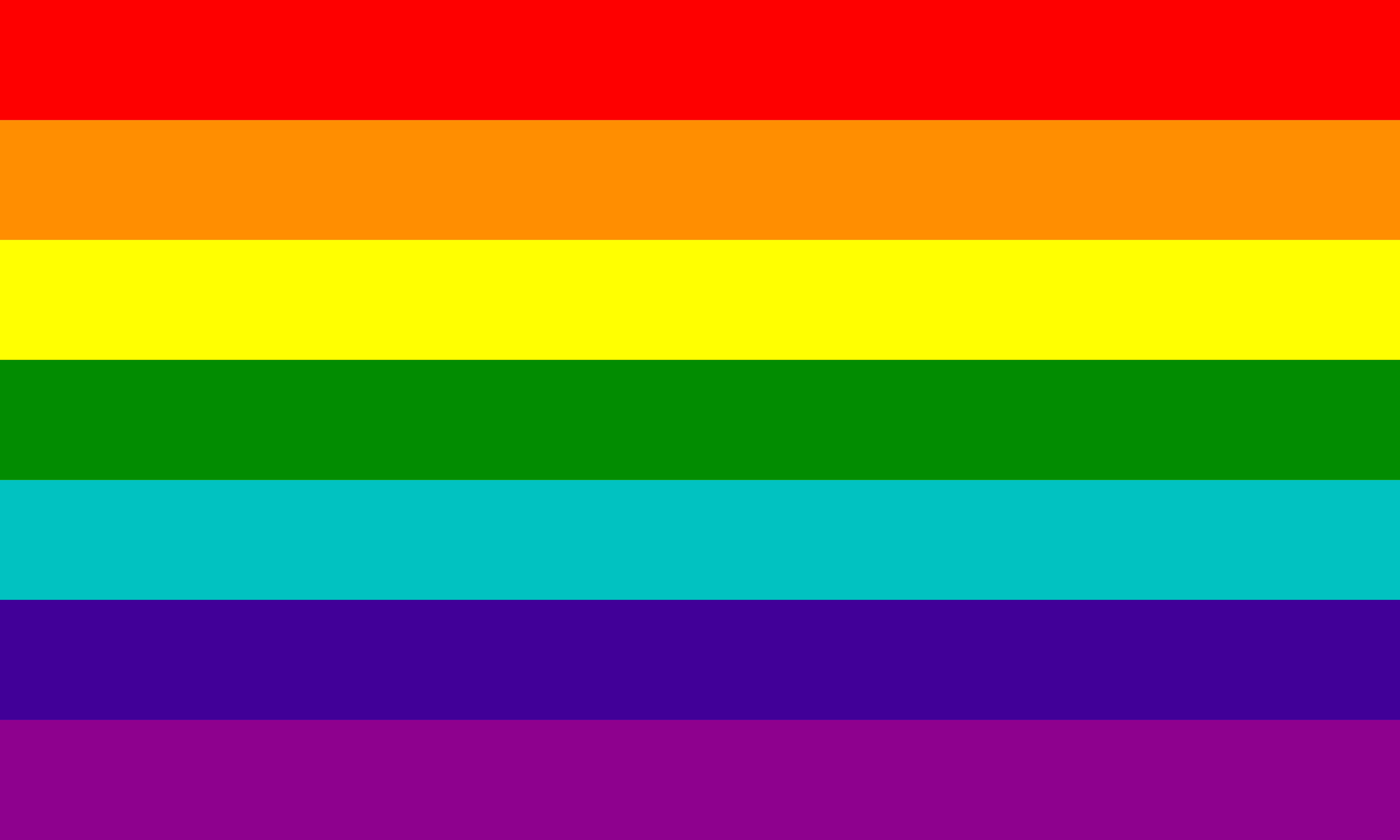
Following the assassination of Harvey Milk, San Francisco city council member and queer activist, there was a general call for his legacy to include a queer pride flag that would be widely flown. Baker then created this flag which dropped the pink color, probably because that fabric color was not widely available. 8 stripes became 7.
From 7 to 6
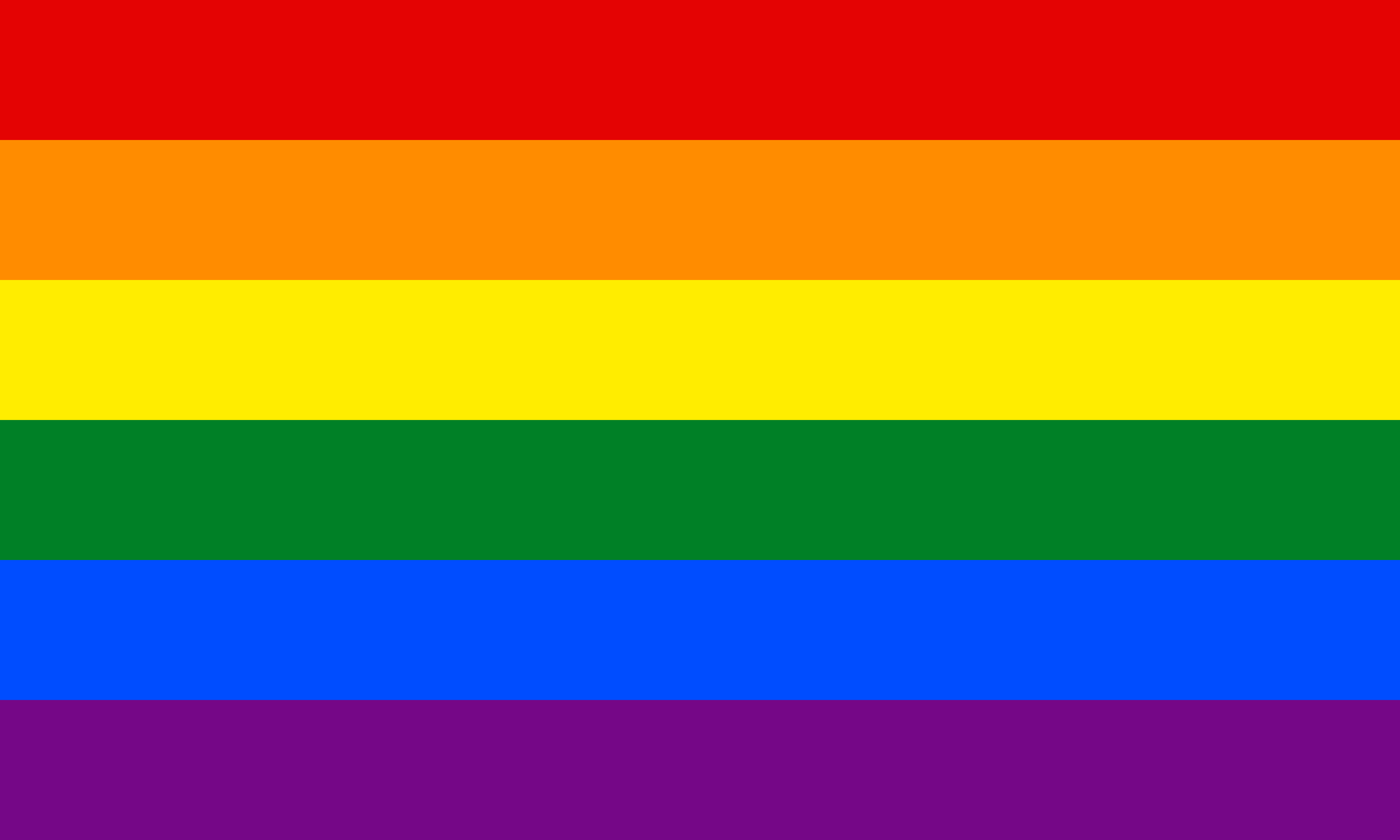
In 1979, there was another change. The turquoise color was dropped. It could have been because the turquoise fabric was less available for large-scale production or because it was very close to the color blue. And each color symbol was described again.
- Red: Life + fight against HIV/AIDS
- Orange: Healing and health for the entire community
- Yellow: Positive energy and hope
- Green: The natural world
- Blue: Peace and harmony
- Purple: The diverse identities within the community living in unity
Including Minority Queer Members – The Philadelphia Flag
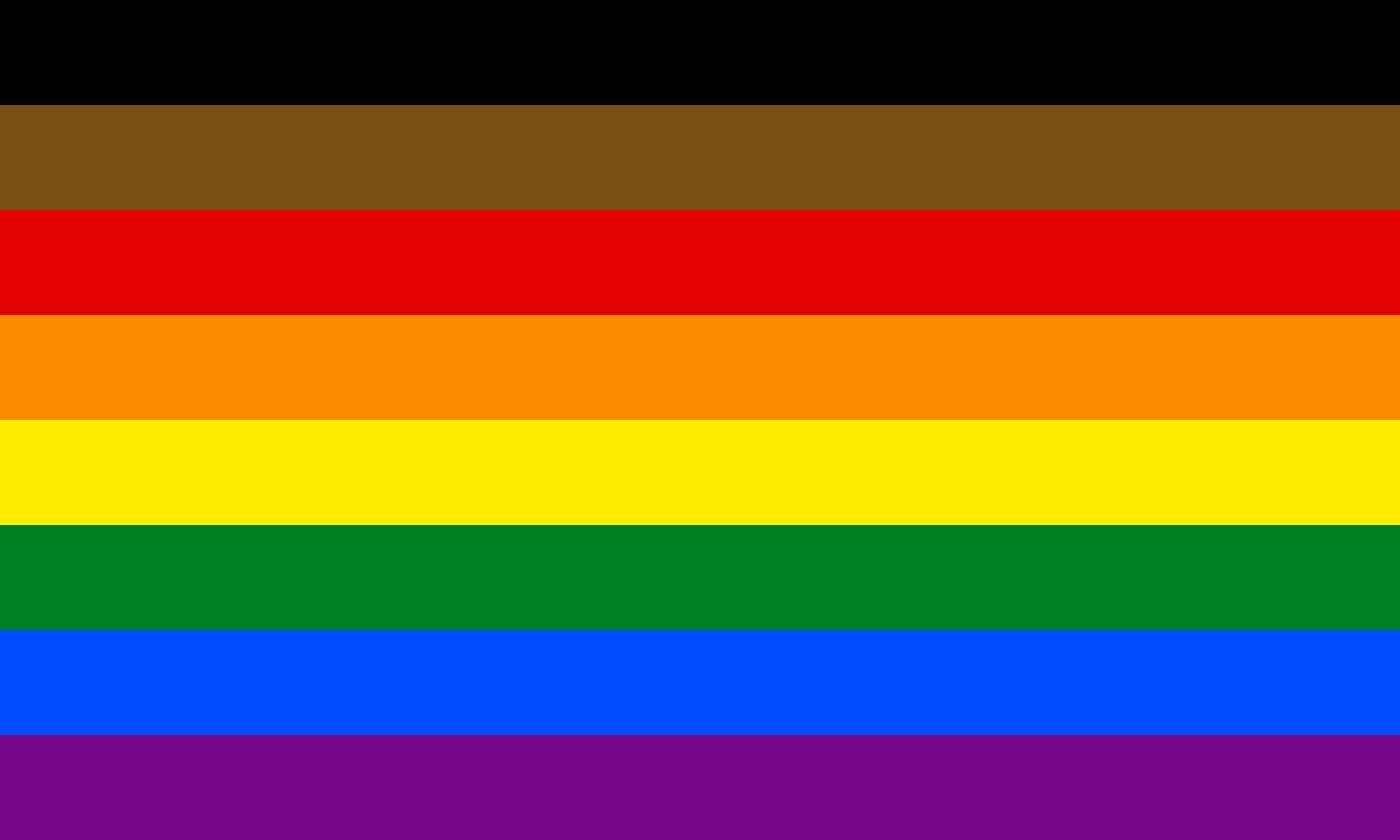
This flag was designed by the Philadelphia Office of LGBT Affairs in response to a report of racism in gay bars. The black and brown stripes were added to the traditional pride flag to honor the contributions of queer people of color and the continuing fight for justice and inclusion. The Office insisted that this was not meant to replace the traditional 6-stripe flag but to be used primarily within their own community.
Attempts at Greater Inclusion
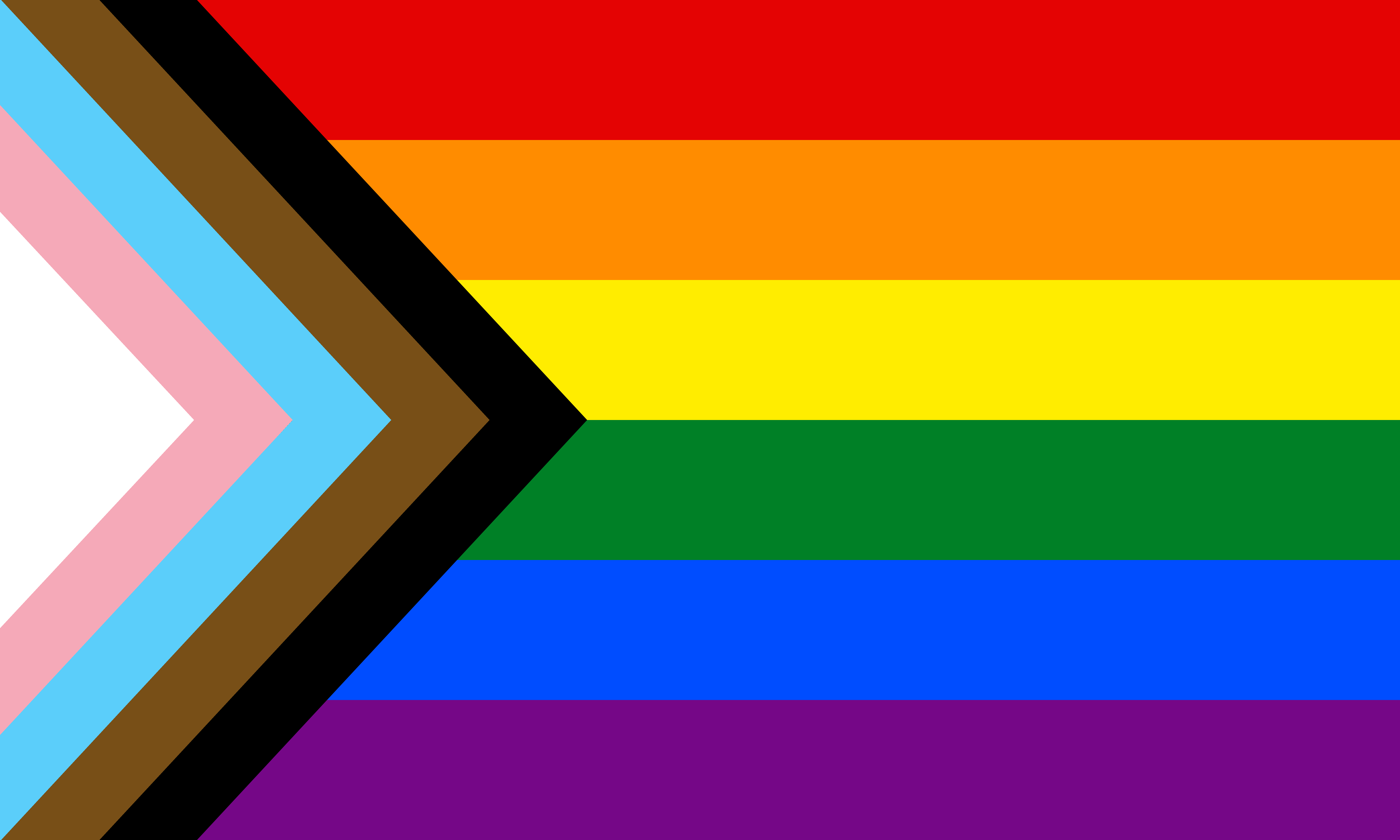
In 2018, Daniel Quasar who identifies as a “queer, nonbinary demiguy” designed a flag to incorporate the “left out and/or marginalized queer population”. His flag has the traditional 6 stripes of the Pride flag but other colored chevron stripes coming in from the side – the black for those who have died from AIDS, the black and brown to represent minority communities, and the other three to symbolize the transgender community.
According to Qasar, the chevrons coming in from the left symbolize that there has been movement toward inclusion but that more must still be done.
Adding the Intersex Community

Quasar’s flag did leave out the intersex queer population, a population that has felt marginalized for a long time. So, in 2021 intersex advocate Valentino Vecchietti, member of the Intersex Equality Rights UK group, took Quasar’s flag and added the predominant intersex symbol, the purple circle on yellow.
This flag has become one of the most popular symbols of the queer population to date. Whether it becomes incorporated as the predominant Pride flag is yet to be seen.
Am I a Queer Person?
While queer originally meant something strange, odd, or fake, it has evolved into meaning anyone on the LGBTQIA+ spectrum and in a positive way.
No one can answer this question for you. And there are so many identities on the queer spectrum that you may have difficulty deciding where you fall if at all.
Here are a few questions you can ask:
- Do I feel romantic or sexual attraction in a hetero way? An early example may be if, in early adolescence, you are woman and experience solely male attractions. You are probably not queer. If, on the other hand, you find yourself attracted to other females and to males, you may be bisexual – certainly on the spectrum. It will be important to analyze your feelings as you move into adulthood.
- If you find yourself uncomfortable in hetero and cisgender social groups when everyone else is coupling off as males and females, and you feel no attraction to your date, you may need to spend some time exploring alternate identities to determine how you fit in.
- Do you feel a need to explore beyond the hetero world in which you have grown up? Think about it. Do gay men wake up all of a sudden with their new identity? Not likely. They go through a process of exploration and thought.
- Do you feel angry when others pressure you into hetero situations in which you feel uncomfortable, even over your objections?
- Look for other identifiers that you may fit somewhere on the spectrum. What types of media spark your interest? What types of media turn you off? This can give you some clear clues. Does romance turn you off? Are you turned off by sex? Are you turned on by sex between gays or lesbians, or both? If straight sex is just not your “thing,” then you indeed may be queer. And where you fit on that spectrum may move around a bit during your exploration.
How to Support Queer People
The Harvard Business Review recently published an article summarizing a four-year research project to investigate what constitutes a queer ally based on what that population says is important. The six studies in this project involved thousands of LGBTQIA+ participants of various genders and sexual identities on the queer spectrum.
In the end, there are three things that this population views as significant for true allyship.
Acceptance
Part of this involves a public commitment to equality and justice for all people and a sense of treating everyone fairly. This is clearly the first step because it leads to action based on those commitments.
Action
There are two clear aspects to action. The first is to educate yourself on the whole community, its specific identities, its challenges in society and in the workplace. This will require lots of time, study, and listening. While you’re at it, make sure you understand the difference between genders and sexual orientations. It will help you with communication.
The second aspect is to speak out whenever faced with talk or action against this population – in social settings, in the workplace, on social media, etc. This can be risky because it can come with negative consequences, but it is an important indicator that you are genuine in allyship.
Humility
This aspect of allyship can be summarized easily – listen more than talk. Members of this population know themselves far better than you do, not matter how much study and exploration you have completed. Exhibiting humility by admitting that you do not know what they do because you are not in their shoes is important to them.
Share this post:
What do you think?
 Queer Flag
Queer Flag


